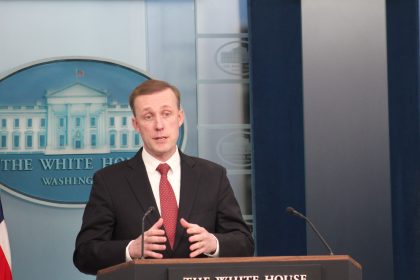Army Releases Climate Strategy Implementation Plan

WASHINGTON — The U.S. Army released a comprehensive plan on Wednesday aimed at reducing the future impacts and risks on its installations and fighting forces associated with climate change.
Senior Army leaders have long been concerned that the effects of climate change and extreme weather are becoming increasingly more significant on installations, missions and operations.
Designed to complement the previously released Army Climate Strategy, officials say the new Climate Strategy Implementation Plan is another step in the Army’s decadeslong effort to combat climate change in support of the nation’s security interests.
“Climate change poses unique challenges to U.S. national interests and the Army at all levels,” the plan says in its introductory pages. Observed changes in today’s environment increase demands on the U.S. military and risks the Army’s ability to train, deploy, fight and win the nation’s wars.
“All Army components and organizations are addressing climate change under current authorities, however, these efforts have not, until now, been aligned in one plan to optimize effectiveness and efficiency,” it continues.
“As extreme weather becomes commonplace, the Army must adapt its installations, acquisition programs, and training so that the Army can operate in this changing environment and reduce our greenhouse gas emissions,” said Secretary of the Army Christine Wormuth in a written statement.
“This climate implementation plan will improve our resiliency and readiness in the face of these changes,” she said.
The plan was developed by the Office of the Assistant Secretary of the Army for Installations, Energy and Environment, and was coordinated with the Army Staff and Army Commands.
It was predicated on four key assumptions:
First, that changes in human behavior can mitigate both the magnitude and severity of the negative consequences resulting from climate change.
Second, that the Army will continue to prioritize its operations, activities, investments and policies based on available funding. Simply put, the Army will not be able to afford to do everything it could do, and therefore must prioritize what it will do.
Third, that the quantity of commodities, raw materials and other products available through market supply chains will be sufficient to meet the Army’s prioritized requirements for as long as the current plan remains in place.
Fourth, that emerging technologies will produce systems that are designed to be more efficient, increase the use of renewable energy and reduce Army greenhouse gas emissions.
“This Army Climate Strategy Implementation Plan is an imperative document for the Army as we improve installation sustainability and resilience in the face of climate change and extreme weather threats,” said Rachel Jacobson, assistant secretary of the Army for Installations, Energy and Environment.
“It will guide how we make decisions in reducing greenhouse gas emissions across the Army and in addressing risks to our people and lands,” Jacobson said.
She said the implementation plan will position Army installations and supply chains to better withstand extreme weather, improve training relevance in a changing world and help soldiers fulfill their missions under the harshest conditions.
Dan can be reached at [email protected] and @DanMcCue

























